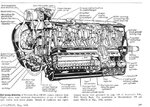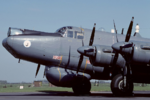Hello!
I just noticed that all the Griffon engined Spitfires have those bumps on the engine cowling. Can someone tell me what they are and what use they serve? Since I've seen them exclusively on Griffon engined Spitfires and not a single Merlin engined one, I guessed it has something to do with the Engine itself but I could not find anything about it.
Any help in that regard would be great!
Cheers!


